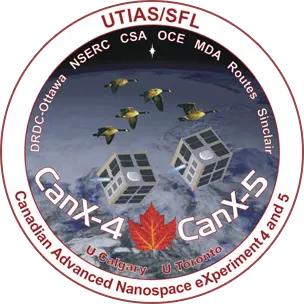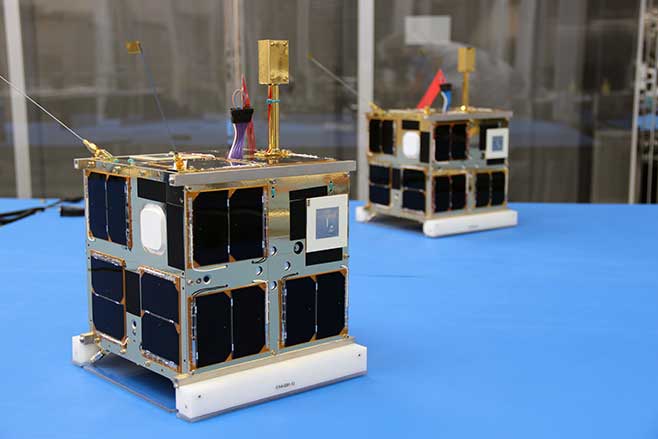CanX-4 and CanX-5
Precise formation flying and inter-satellite communication


CanX-4 and CanX-5 are a pair of identical nanosatellites developed by SFL that used the technology qualified aboard CanX-2 to perform formation flight. This mission demonstrated centimeter-level accurate position determination and autonomous formation maintenance at an ultra-low cost.
CanX-4/CanX-5 were launched on 30 June 2014 and successfully accomplished their mission ahead of schedule in November of the same year. They demonstrated relative position determination to within a few centimeters by virtue of carrier-phase differential GPS measurements. Formations were achieved to better than one meter precision with the Canadian Nanosatellite Advanced Propulsion System (CNAPS), a cold-gas system developed at UTIAS/SFL. During the mission, the propulsion system exceeded all performance requirements with ample fuel leftover for an extended mission in the future. The on-orbit results of CanX-4/CanX-5 were independently verified by the German Aerospace Center, DLR, by analyzing the GPS residuals from the mission.
An SFL-developed inter-satellite link also outperformed requirements, allowing the two satellites to share position and attitude information to facilitate tight coordination. The data from the CanX-4/CanX-5 mission will enable future operational formation flying missions involving sparse aperture sensing, ground moving target indication, precise geolocation, change detection, and other applications including on-orbit inspection.
